Top 50 mining companies in 2022: coal, lithium win big, China investors lose out
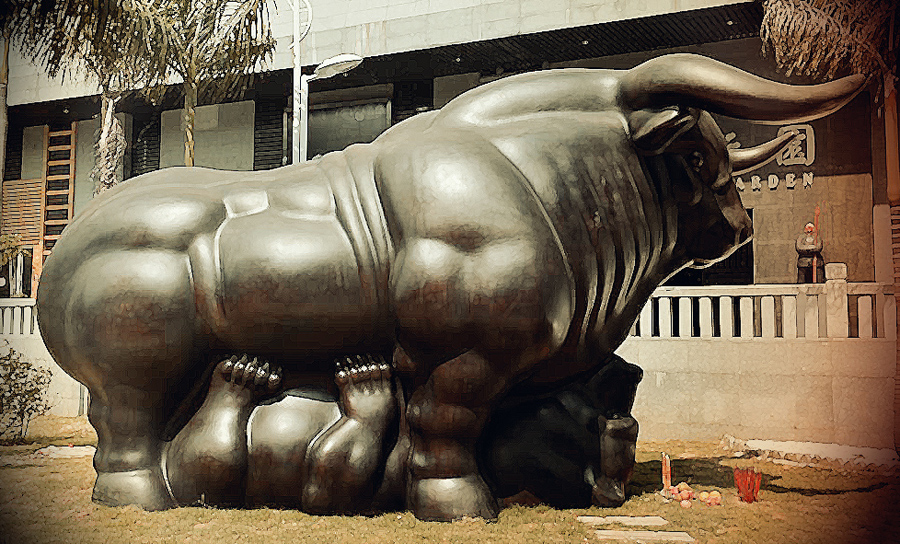
World’s top 50 mining companies end 2022 rock solid but Chinese stocks slide down the rankings despite surging coal and lithium prices, and Russian miners trading in Moscow finally succumb.
Commodity prices are always volatile, but in 2022 metal and mining markets reached new levels of turbulence, as the pandemic played out in China, inflation plagued the developed world and the Ukraine war upended global energy.
Copper ended the year more than 20% below the all-time record hit in March, the gold market’s highs and lows during the year were more than $400 apart, lithium prices continued their exponential run, tin prices collapsed, against all odds coal prices surged to never-seen levels, potash advanced to 14-year peaks, uranium enjoyed the best market since Fukushima and nickel made good on its reputation as the devil’s metal.
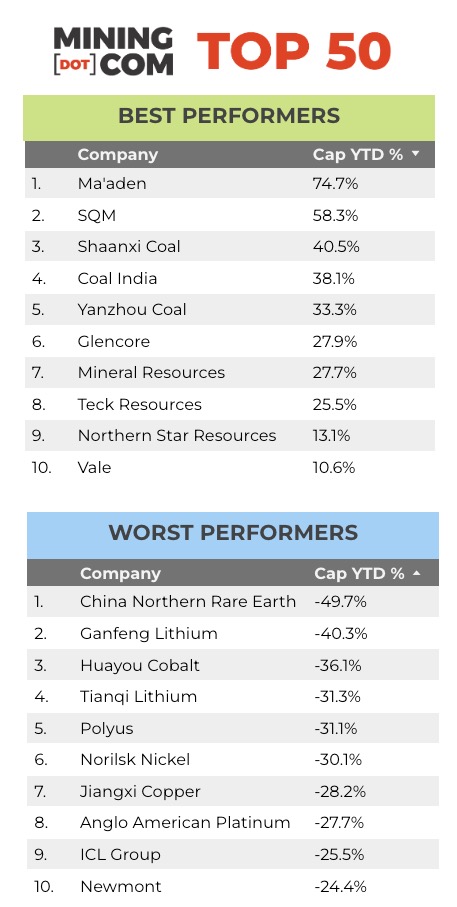
The MINING.COM TOP 50* ranking of the world’s most valuable miners added $165 billion over the course of the fourth quarter erasing steep losses suffered since their March highs.
Collectively, the world’s biggest mining companies are now worth $1.39 trillion, just a shade below the combined market cap at the end of 2021. That compares to a 9% drop in the Dow Jones Industrial Average and a nearly 20% decline in the S&P500.
The year started with a big bang and measured from individual stocks’ 52-week highs – almost all hit in March/April – the top 50 has shrunk by more than $1 trillion. It’s a precipitous decline but compared to other sectors, notably big tech, much of those losses were recouped by the end of the year.
Greenback clapback
Market cap declines on the LSE, ASX, TSX and elsewhere were compounded by a soaring dollar against all major currencies.
For instance BHP, which flirted with a $200 billion market cap in April and briefly displaced oil giant Shell as the most valuable stock on the FTSE in a symbolic changing of the guard, is now worth nearly $50 billion less in US dollar terms.
That compares to a 23% share price gain over 2022 in Sydney for the world’s number one mining company, as Australian investors sought out currency hedges.
Coal, oil on fire
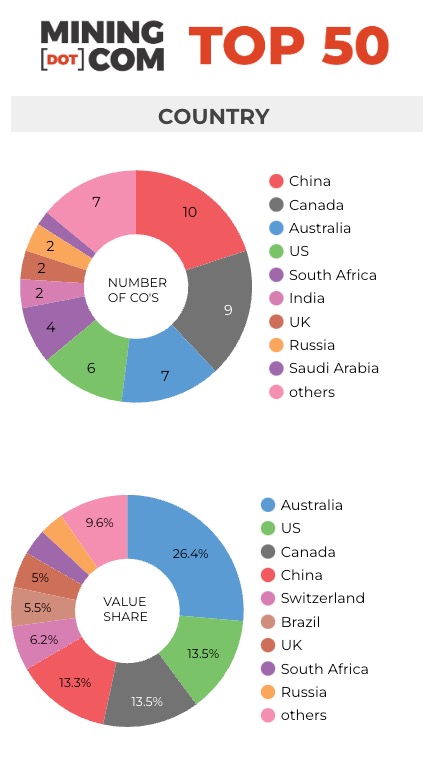
After spending time outside the top 10 in 2021 Glencore’s position at no. 3 at a valuation of $86 billion now seems secure after a stunning 68% gain on the LSE and a 28% jump in USD terms.
The Swiss giant is benefitting from a strategy not to ditch coal like its peers – despite growing pressure – and a trading arm making the most of sky high prices for energy.
Vancouver’s Teck Resources, thanks to its exposure to Canadian oil sands and coal, made it onto the best performer list, joining Chinese heavyweights Shaanxi Coal up over 40% and Yanzhou Coal up a third in value this year in dollar terms despite the weak renminbi.
Coal India, the world’s number one producer of steam coal, is also enjoying a bull market, up over 38% in 2022.
Lithium leap
A 150% jump in global average lithium prices in 2022 and record prices for spodumene saw the combined worth of the five lithium companies in the top 50 jump to just shy of $100 billion, despite Pilbara Minerals being pushed out of the ranking.
Lithium producers’ representation in the ranking is likely to grow, with Pilbara Minerals now sitting just outside the top 50 and peers IGO and Allkem also within reach. With such a wide field in Australia and elsewhere, the lithium industry is also ripe for consolidation, particularly with today’s lithium prices moderate and demand continues to expand rapidly over the coming years as expected.
SQM, the world’s number two producer of the battery raw material gained 10 spots and 60% in value last year. Santiago-based SQM is the second best performer after Saudi Arabia’s Ma’aden, a rapidly growing precious and base metal miner and a beneficiary of the kingdom’s push to diversify its economy.
Chinese chill
A superstrong lithium market was not enough to save China’s Ganfeng and Tianqi from steep losses in 2022 as Hong Kong, Shanghai and Shenzhen markets remain in turmoil amid a rapidly changing covid environment and warnings about the economic prospects world’s top consumer of commodities.
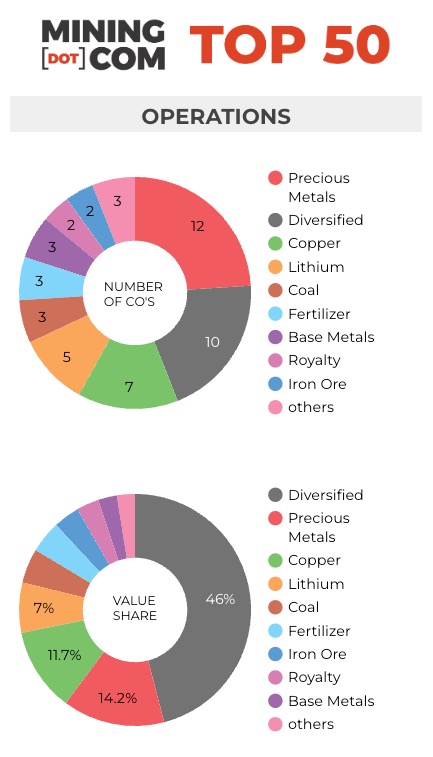
Despite coal keeping Shaanxi and Yanzhou deep in the black, underperforming base metal producers Zijin, China Moly and Jiangxi Copper and weakness in electric vehicle raw material producers China Northern Rare Earth and Huayou Cobalt meant that the combined value of Chinese companies in the ranking shrunk by $47 billion over the course of the year.
At $184 billion, the value of the 10 Chinese companies in the top 50 dipped below that of US and Canadian entrants for the first time in years.
With few listed candidates that could join the top tier at the moment (JDC Moly sits at position 61 and Zhaojin at 71), some M&A and IPOs may be needed to see the country regain its dominance.
Russian retreat
While trading on Western markets in Russian stocks have been halted, the country’s miners, much like the rouble and the Moscow Stock Exchange, have defied gravity. But neither have they been able to capitalise on strong nickel, PGM and gold prices.
Norilsk Nickel, thanks to captive investors on the MCX, is still worth north of $30 billion but its relative weakness to its peers saw it drop out of the top 10 for the first time. The PGM, nickel and copper producer had been the fifth most valuable company at end-June.
Diamond giant Alrosa drops out of the top 50 after falling 16 places during the final quarter while Polymetal appears unlikely to make a return to the top 50 after a dismal year which saw units of the gold miner trading in London sink 77% over the past year.
A $8 billion decline in market cap over the year places Polyus at number 29 with a valuation of $14.8 billion. The Moscow-headquartered company, which is approaching 3 million ounces of annual output and enjoys the world’s largest gold reserves was knocking at the door of the top 10 as recently as 2020.
Click on table for full-size view:
*NOTES:
Source: MINING.COM, Mining Intelligence, Morningstar, GoogleFinance, company reports. Trading data from primary-listed exchange at December 30, 2022 where applicable, currency cross-rates Jan 3, 2023.
Percentage change based on US$ market cap difference, not share price change in local currency.
Market capitalization calculated at primary exchange from total shares outstanding, not only free-floating shares. Agnico Eagle market cap change based on combined value of Agnico and Kirkland Lake before merger.
As with any ranking, criteria for inclusion are contentious issues. We decided to exclude unlisted and state-owned enterprises at the outset due to a lack of information. That, of course, excludes giants like Chile’s Codelco, Uzbekistan’s Navoi Mining, which owns the world’s largest gold mine, Eurochem, a major potash firm, Singapore-based trader Trafigura, and a number of entities in China and developing countries around the world.
Another central criterion was the depth of involvement in the industry before an enterprise can rightfully be called a mining company.
For instance, should smelter companies or commodity traders that own minority stakes in mining assets be included, especially if these investments have no operational component or warrant a seat on the board?
This is a common structure in Asia and excluding these types of companies removed well-known names like Japan’s Marubeni and Mitsui, Korea Zinc and Chile’s Copec.
Levels of operational or strategic involvement and size of shareholding were other central considerations. Do streaming and royalty companies that receive metals from mining operations without shareholding qualify or are they just specialised financing vehicles? We included Franco Nevada, Royal Gold and Wheaton Precious Metals.
Lithium and battery metals also pose a problem due to the booming market for electric vehicles and a trend towards vertical integration by battery manufacturers and mid-stream chemical companies. Battery producer and refiner Ganfeng Lithium, for example, is included because it has moved aggressively downstream through acquisitions and joint ventures.
Vertically integrated concerns like Alcoa and energy companies such as Shenhua Energy where power, ports and railways make up a large portion of revenues pose a problem, as do diversified companies such as Anglo American with separately listed majority-owned subsidiaries. We’ve included Angloplat in the ranking but excluded Kumba Iron Ore in which Anglo has a 70% stake to avoid double counting.
Many steelmakers own and often operate iron ore and other metal mines, but in the interest of balance and diversity we excluded the steel industry, and with that many companies that have substantial mining assets including giants like ArcelorMittal, Magnitogorsk, Ternium, Baosteel and many others.
Head office refers to operational headquarters wherever applicable, for example BHP and Rio Tinto are shown as Melbourne, Australia, but Antofagasta is the exception that proves the rule. We consider the company’s HQ to be in London, where it has been listed since the late 1800s.
Please let us know of any errors, omissions, deletions or additions to the ranking or suggest a different methodology.
More News
South32 third-quarter manganese output misses estimates
The world's biggest producer of manganese ore produced 476,000 wet metric tons last quarter.
April 16, 2025 | 03:48 pm
Alcoa reports $20 million tariff hit on imports from Canada
April 16, 2025 | 03:42 pm
{{ commodity.name }}
{{ post.title }}
{{ post.date }}

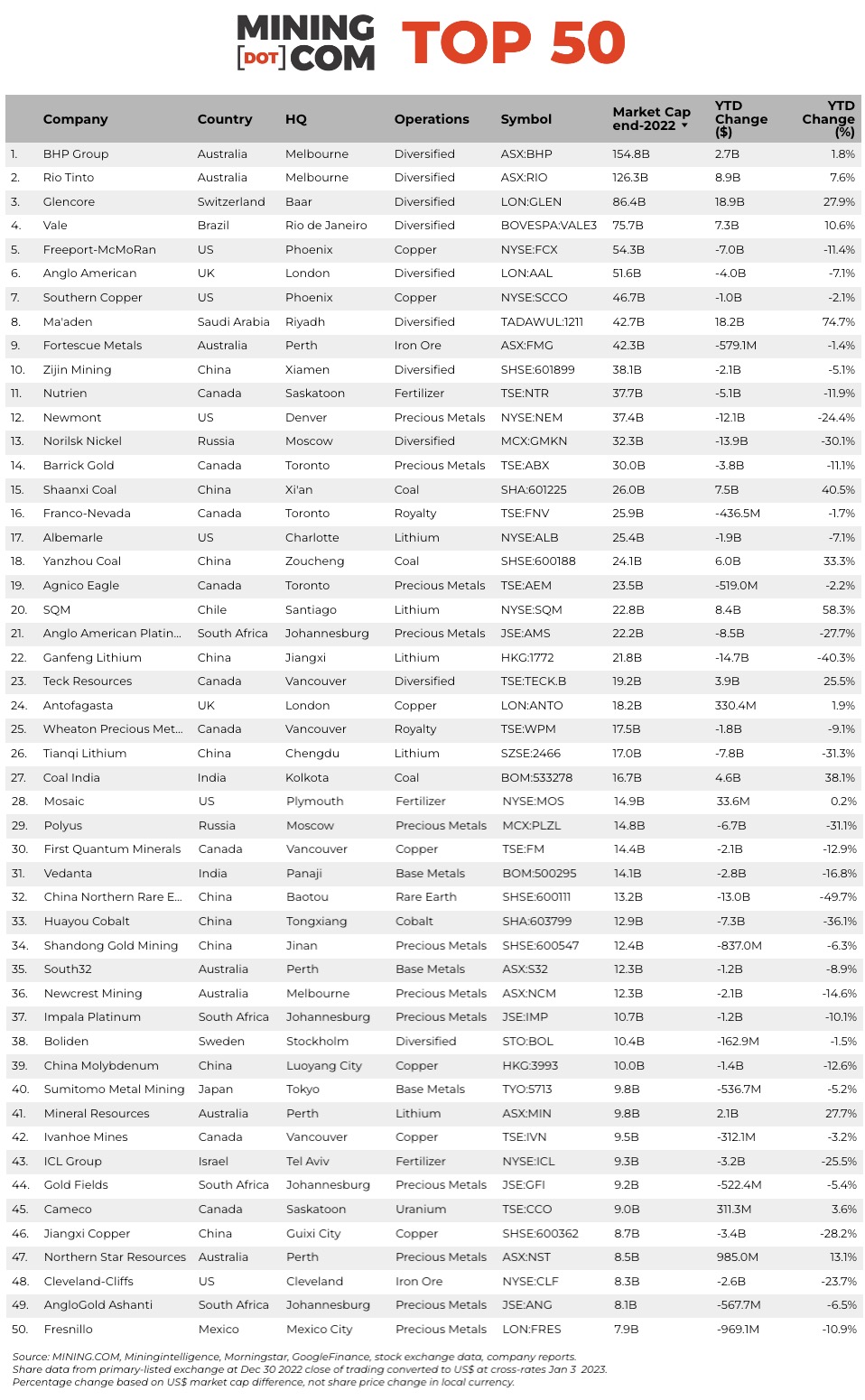
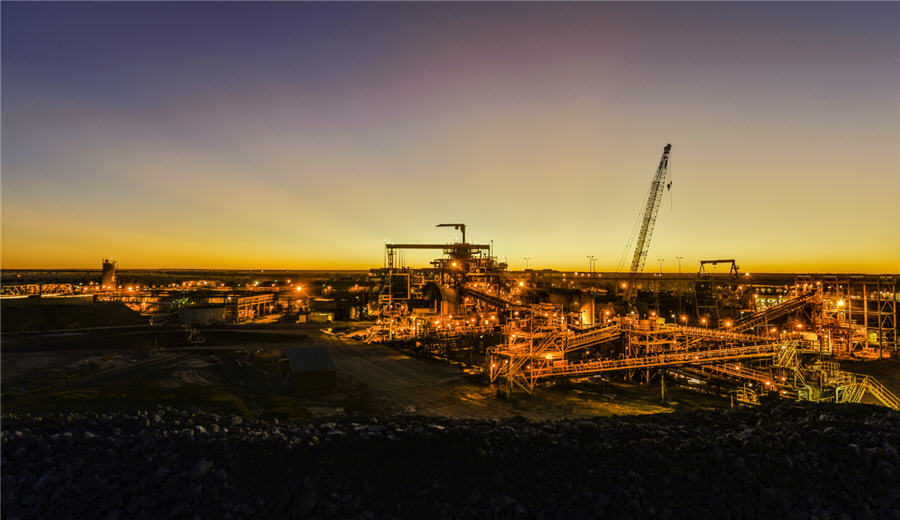
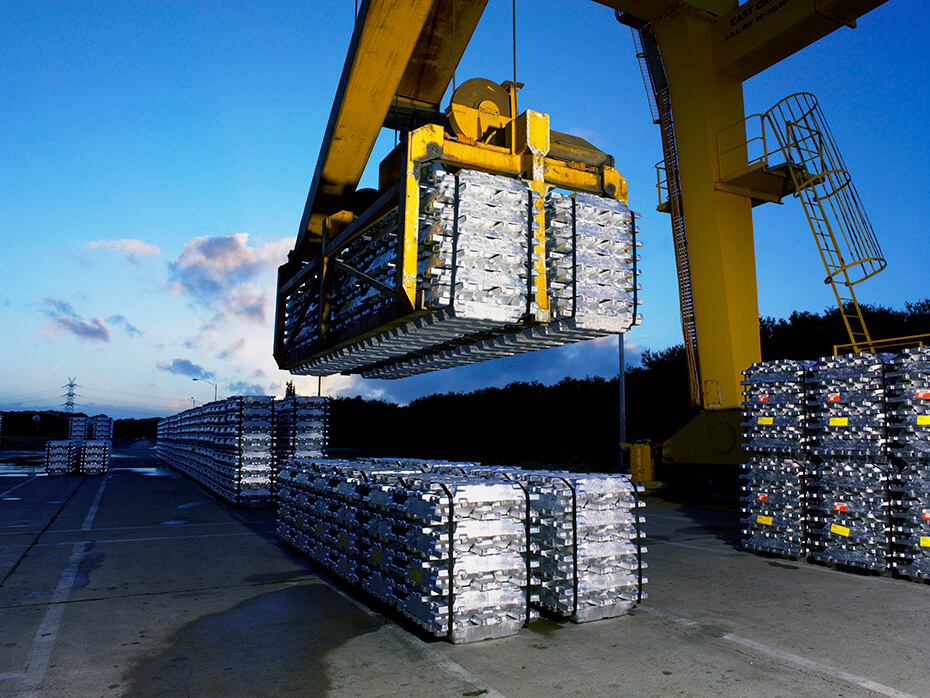

Comments